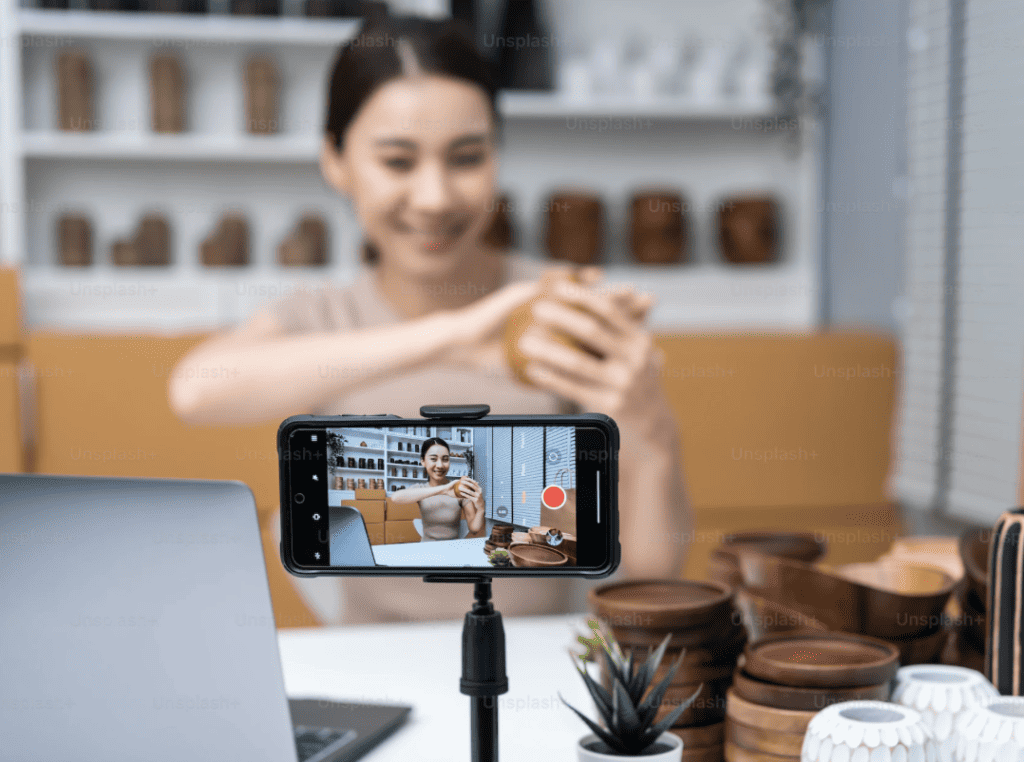In today’s digital landscape, YouTube stands as a powerful platform for lead generation, offering unique opportunities for businesses to connect with potential customers.
This article delves into the intricacies of leveraging YouTube for lead generation, starting with understanding the fundamental concepts and benefits of generating leads from YouTube.
We’ll explore how to create engaging YouTube videos that not only captivate your audience but also drive conversions. Optimizing your YouTube channel for lead generation is crucial, and we’ll guide you through the best practices to enhance your channel’s effectiveness.
Next, we’ll discuss YouTube Lead Gen Ads, a potent tool for boosting your lead generation efforts, and answer the critical question: Are YouTube ads good for lead generation?
I’ll also highlight effective lead generation tools that can streamline your strategy and share inspiring lead generation examples from successful YouTube campaigns.
Tracking and analyzing leads from YouTube is essential for refining your approach, and we’ll provide insights into the best methods for doing so. Finally, we’ll look at innovative techniques, including the use of Lead Generation AI, to take your YouTube lead generation efforts to the next level.
Understanding Lead Generation from YouTube

Many businesses overlook the potential of lead generation from YouTube, often viewing it primarily as a platform for entertainment rather than a powerful marketing tool.
This misconception can limit their reach and growth opportunities. However, understanding YouTube’s vast user base and the depth of engagement it fosters can open new avenues for capturing quality leads.
Products that benefit most from YouTube lead generation are those requiring detailed explanations or demonstrations, such as online courses, workshops, software tools, and consulting services.
These products thrive on interaction and can significantly benefit from the visual and auditory engagement that YouTube videos offer.
People turn to YouTube to solve problems, learn new skills, and discover products. This means your lead generation strategy should align closely with the search intent of your target audience.
For instance, if you offer an online course, create videos that address common pain points or frequently asked questions in your niche. Tutorials, product demos, and expert interviews can attract viewers actively searching for solutions.
To maximize effectiveness, ensure your video content is informative, engaging, and aligned with the keywords and topics your potential leads are searching for.
Utilize calls to action (CTAs) within your videos to guide viewers towards your lead capture forms or landing pages. This alignment between content and audience needs is crucial for successful lead generation from YouTube.
Creating Engaging YouTube Videos for Lead Generation

Building an effective video funnel for a content creation course on YouTube involves a strategic approach that guides viewers from initial discovery to becoming paying customers. Here’s a blueprint on how to achieve this:
1. Introduction Videos
Start with introductory videos that address the most basic questions and challenges in content creation. These videos should be easily searchable with titles like “Content Creation 101: Getting Started” or “Top 5 Tools for Beginners in Content Creation.” These initial videos are designed to attract a wide audience and establish your channel as a valuable resource.
2. Intermediate Topics
Once you’ve captured your audience’s attention, introduce intermediate topics that dive deeper into content creation techniques. Videos such as “How to Create Engaging Thumbnails” or “Mastering Video Editing for Content Creators” can cater to viewers who are ready to learn more advanced skills. Ensure these videos still provide free, high-quality content to build trust and authority.
3. Advanced Insights
Sprinkle advanced topic videos throughout your channel to keep your audience engaged and curious. Examples include “Advanced SEO Strategies for Content Creators” or “Monetizing Your Content: A Comprehensive Guide.” These videos should hint at the depth of knowledge available in your paid course without giving away all the secrets.
4. Call to Action (CTA) Integration
In each video, integrate clear and compelling CTAs. These could be verbal prompts, on-screen graphics, or links in the video description encouraging viewers to download a free resource, join a webinar, or fill out an interest form. For instance, after explaining a complex topic, you might say, “If you want a complete guide on mastering these techniques, sign up for our free webinar linked below.”
5. Free Webinars and Workshops
Offer free webinars or workshops as lead magnets. Promote these sessions in your YouTube videos, emphasizing the exclusive content and live interaction available. This not only gathers leads but also showcases your expertise and the value of your paid offerings. Title your videos like “Join Our Free Content Creation Workshop” to drive interest.
6. Interest Forms and Landing Pages
Direct your audience to landing pages where they can fill out interest forms or sign up for newsletters. These forms should ask for minimal information to reduce friction and increase sign-ups. The goal is to capture leads by offering valuable resources in exchange for their contact details. Ensure your landing pages are optimized for conversions with clear benefits and a simple sign-up process.
7. Email Nurture Campaigns
Once you have the leads, use email nurture campaigns to move them further down the funnel. Send a series of emails that provide additional tips, case studies, and previews of your paid course content. Each email should have a strong CTA guiding recipients toward purchasing the course.
8. Exclusive Content Previews
Create videos that offer previews or snippets of your paid course content. Titles like “Sneak Peek: Advanced Content Strategies” can intrigue viewers. Use these videos to highlight the unique value of your course, emphasizing how it can solve their specific problems or elevate their skills.
9. Testimonials and Case Studies
Include testimonials and case studies in your video content to build credibility. Videos such as “How Our Course Helped X Achieve Y” can demonstrate the tangible benefits of enrolling in your course. These success stories can be powerful motivators for potential leads to take the next step.
10. Follow-Up Engagement
Finally, engage with your audience through comments, Q&A sessions, and live streams. Responding to questions and interacting with viewers helps build a community around your channel and fosters trust. This ongoing engagement can encourage leads to become loyal customers.
By following this blueprint, you create a structured video funnel that guides viewers from discovery to conversion, effectively leveraging YouTube for lead generation.
Each step is designed to build trust, provide value, and encourage action, ensuring a steady flow of leads into your sales pipeline.
Optimizing Your YouTube Channel for Lead Generation

Optimizing your YouTube channel for lead generation involves a strategic approach to channel design, content organization, and audience engagement. Let’s look at how some famous content creators have effectively optimized their channels for lead generation.
Example: Neil Patel
Neil Patel, a renowned digital marketing expert, has mastered the art of using YouTube for lead generation. His channel is a prime example of how to structure and optimize a YouTube presence for maximum impact.
- Channel Layout and Design Neil Patel’s YouTube channel features a clean, professional layout with a cohesive brand identity. His channel art, profile picture, and thumbnails all align with his personal brand, creating a recognizable and trustworthy image.
- Content Organization His videos are organized into playlists that cater to specific topics within digital marketing, such as SEO, content marketing, and social media strategies. This organization helps viewers easily find content relevant to their interests, encouraging them to watch more videos and engage deeper with his content.
- SEO and Keywords Neil optimizes his video titles, descriptions, and tags with relevant keywords to ensure his videos appear in search results. This makes it easier for potential leads to discover his content when searching for marketing advice.
- Engaging Thumbnails and Titles His video thumbnails are eye-catching and professional, often featuring his face and bold text that highlights the video’s key points. The titles are clear and compelling, designed to pique curiosity and encourage clicks.
- Calls to Action In every video, Neil includes clear and strategic calls to action (CTAs). He often invites viewers to visit his website for more resources, sign up for his newsletter, or download a free guide. These CTAs are integrated naturally into the content, providing value while guiding viewers toward becoming leads.
- Lead Magnets Neil frequently offers lead magnets such as eBooks, checklists, and free tools. He promotes these in his videos and provides links in the video descriptions. This not only captures leads but also offers immediate value, building trust with his audience.
- Consistent Posting Schedule Consistency is key in maintaining audience engagement. Neil Patel posts regularly, ensuring his audience knows when to expect new content. This regular posting schedule helps build a loyal viewer base, increasing the likelihood of converting viewers into leads.
- Community Engagement Neil actively engages with his audience through comments, live Q&A sessions, and community posts. This interaction fosters a sense of community and trust, encouraging viewers to take the next step and become leads.
Example: Brian Dean (Backlinko)
Another great example is Brian Dean from Backlinko, who focuses on SEO and digital marketing.
- Content Quality Brian’s videos are packed with high-quality, actionable insights. He doesn’t hold back on valuable information, which establishes him as an authority in his field and attracts serious learners who are more likely to convert into leads.
- Tutorials and Case Studies His channel features detailed tutorials and case studies that demonstrate the effectiveness of his strategies. These videos are not only educational but also serve as proof of his expertise, building credibility with his audience.
- Lead Capture Integration Brian often directs viewers to his blog for more in-depth content, where they encounter lead capture forms. This seamless integration between his YouTube channel and website ensures a smooth transition from viewer to lead.
By emulating these strategies, you can optimize your YouTube channel for lead generation. Focus on creating high-quality content, organizing it effectively, optimizing for search, and engaging with your audience.
Clear CTAs and valuable lead magnets will help turn your viewers into leads, driving business growth through your YouTube presence.
Leveraging YouTube Lead Gen Ads
Running YouTube Lead Gen Ads is a powerful way to capture potential leads directly from your videos. Here’s how you can set up and run these ads, along with a look at some of the downsides.
Setting Up YouTube Lead Gen Ads
- Create a Google Ads Account: If you don’t already have one, you’ll need to create a Google Ads account. This account will be linked to your YouTube channel.
- Link Your YouTube Channel: In your Google Ads account, link your YouTube channel to ensure your ads appear alongside your videos.
- Create a New Campaign: Start a new campaign and select the “Leads” goal. Choose “Video” as the campaign type.
- Define Your Audience: Target your ads to specific demographics, interests, and behaviors. You can also use remarketing to target viewers who have previously engaged with your videos.
- Create Your Ad: Design a compelling video ad that grabs attention quickly. Include a strong call to action (CTA) that encourages viewers to fill out a lead form. The lead form can collect contact information such as name, email, and phone number.
- Set Your Budget: Decide on a daily or campaign budget. You can control how much you spend and adjust based on performance.
- Launch and Monitor: Once your ad is live, monitor its performance through Google Ads analytics. Track key metrics such as impressions, click-through rates (CTR), and conversion rates.
Downsides of YouTube Lead Gen Ads
- Cost: Running YouTube ads can be expensive, especially in competitive sectors.
- Ad Fatigue: Viewers might become desensitized to your ads if they see them too frequently, leading to diminishing returns.
- Quality of Leads: Not all leads generated may be high-quality or ready to convert, leading to potential inefficiencies in your sales funnel.
- Complex Setup: The setup and optimization of YouTube ads can be complex, requiring a good understanding of Google Ads.
Approximate Cost of Running YouTube Ads Across Different Sectors
| Sector | Approximate Cost Per Lead (CPL) |
|---|---|
| Technology | $50 – $150 |
| Education | $30 – $80 |
| Healthcare | $60 – $200 |
| Real Estate | $50 – $120 |
| Finance | $60 – $200 |
| E-commerce | $30 – $100 |
| Entertainment | $20 – $70 |
| Travel & Tourism | $40 – $150 |
These values are approximate and can vary based on targeting, competition, and ad quality. It’s essential to continuously monitor and optimize your campaigns for the best results.
By leveraging YouTube Lead Gen Ads effectively, you can tap into YouTube’s vast audience to capture high-quality leads, driving growth for your business.
Effective Lead Generation Tools for YouTube
To maximize lead generation on YouTube, you need tools that enhance video creation, optimize SEO, analyze performance, and capture leads efficiently. Here are some essential capabilities and tools that bring these to life:
| Capability | Needed Features | Tools |
|---|---|---|
| Video Creation and Editing | High-quality production, engaging thumbnails, efficient editing | Adobe Premiere Pro, Canva |
| SEO Optimization | Keyword research, SEO optimization, competitive analysis | TubeBuddy, VidIQ |
| Analytics and Insights | Performance tracking, audience insights, engagement metrics | YouTube Analytics, Google Analytics |
| Lead Capture and Management | Efficient lead capture forms, CRM integration, lead nurturing automation | HubSpot, Leadformly |
| Marketing Automation | Email marketing, campaign automation, personalized follow-ups | Mailchimp, ActiveCampaign |
These tools provide essential capabilities to enhance your lead generation efforts on YouTube, ensuring you can capture, nurture, and convert leads effectively.
Tracking and Analyzing Leads from YouTube

To effectively track and analyze leads from YouTube, you need to set up a comprehensive funnel and use various analytical tools to monitor and optimize each stage. Here’s a detailed approach to building and analyzing a lead generation funnel with hypothetical values.
1. Funnel Stages and Metrics
- Awareness: Viewers watch your videos.
- Interest: Viewers click on the call to action (CTA) and visit your landing page.
- Consideration: Visitors fill out interest forms.
- Conversion: Leads make a purchase or take the desired action.
2. Example Funnel with Hypothetical Values
| Funnel Stage | Metric | Hypothetical Value | Conversion Rate |
|---|---|---|---|
| Awareness | Video Views | 10,000 | – |
| Interest | CTA Clicks | 2,000 | 20% |
| Consideration | Interest Form Submissions | 500 | 25% |
| Conversion | Purchases/Sign-ups | 100 | 20% |
3. Analyzing the Funnel
Awareness Stage Analysis
- Metric: Video Views
- Action: Analyze which videos have the highest views and engagement. Use YouTube Analytics to identify trends and popular content.
Interest Stage Analysis
- Metric: CTA Clicks
- Action: Evaluate the effectiveness of your CTAs. Track click-through rates (CTR) using YouTube Analytics. If CTR is low, consider optimizing your CTA placement, wording, and design.
Consideration Stage Analysis
- Metric: Interest Form Submissions
- Action: Monitor form submission rates using tools like Google Analytics or your CRM. High drop-off rates at this stage might indicate a need to simplify your forms or offer more compelling incentives.
Conversion Stage Analysis
- Metric: Purchases/Sign-ups
- Action: Use your CRM or e-commerce analytics to track conversions. Analyze the journey from form submission to purchase to identify any barriers to conversion.
4. Different Scenarios and Optimization Strategies
Scenario 1: High Video Views, Low CTA Clicks
- Issue: The content is engaging, but the CTA is not compelling or visible enough.
- Solution: Improve CTA visibility, use stronger wording, and place CTAs at strategic points in the video.
Scenario 2: High CTA Clicks, Low Form Submissions
- Issue: The landing page or form may be confusing or not appealing enough.
- Solution: Simplify the form, reduce the number of required fields, and enhance the landing page design and messaging.
Scenario 3: High Form Submissions, Low Conversions
- Issue: Leads are interested but not convinced to make a purchase.
- Solution: Use follow-up emails, offer limited-time discounts, and provide additional value through webinars or free trials.
5. Tools for Tracking and Analysis
| Tool | Purpose |
|---|---|
| YouTube Analytics | Track video performance and viewer engagement |
| Google Analytics | Monitor website traffic and form submissions |
| CRM (e.g., HubSpot) | Manage leads, track conversion rates, and follow-up |
| Heatmaps (e.g., Hotjar) | Analyze user behavior on landing pages |
By meticulously tracking each stage of your funnel and analyzing the data, you can identify weak points and optimize your lead generation strategy on YouTube. This structured approach ensures you maximize conversions and drive business growth effectively.
Innovative Techniques: Lead Generation AI and YouTube

AI can be leveraged for lead generation specifically using youtube as a platform. However, the uses must be balanced with potential pitfalls as well. Here is a table highlighting the use cases.
| Technique | Description | Potential Pitfalls |
|---|---|---|
| AI-Powered Video Recommendations | Use AI to analyze viewer behavior and preferences to recommend tailored videos that guide viewers down the lead generation funnel. | Data Privacy Concerns: Collecting and analyzing user data must comply with privacy regulations. |
| Chatbots in Video Descriptions | Implement AI chatbots linked in video descriptions or as comments to interact with viewers, answer queries, and guide them to lead capture forms. | User Experience: Poorly designed chatbots can frustrate users and harm your brand’s reputation. |
| Predictive Analytics for Content Creation | Utilize AI to predict trending topics and content gaps by analyzing vast amounts of data from YouTube and other platforms, ensuring your content meets demand. | Accuracy: Predictive models can sometimes be inaccurate, leading to the creation of irrelevant content. |
| AI-Generated Personalized CTAs | AI can create personalized CTAs based on viewer behavior and preferences, increasing the likelihood of engagement and lead capture. | Implementation Complexity: Personalizing CTAs requires sophisticated AI models and integration efforts. |
| Automated Video Editing and Enhancements | AI tools can automate video editing processes, enhancing video quality and adding elements like captions and graphics, making videos more engaging. | Quality Control: Over-reliance on automation might lead to errors or a loss of creative control. |
| Voice and Sentiment Analysis | Analyze viewer comments and engagement using AI to gauge sentiment and tailor future content to address viewer needs and concerns. | Misinterpretation: AI might misinterpret sentiments or fail to understand context, leading to inaccurate insights. |
| Dynamic Thumbnail Generation | AI can create dynamic thumbnails tailored to different audience segments, improving click-through rates and engagement. | Consistency Issues: Automated thumbnails might not always align with brand aesthetics or messaging. |
| AI-Driven A/B Testing | Implement AI to run A/B tests on various video elements (thumbnails, titles, CTAs) to identify the most effective combinations for lead generation. | Resource Intensive: Requires significant data and resources to set up and maintain effective A/B testing. |
These innovative AI techniques can significantly enhance your YouTube lead generation efforts by optimizing content, engagement, and conversion rates.
However, careful consideration of potential pitfalls is essential to ensure these technologies are implemented effectively and ethically.
